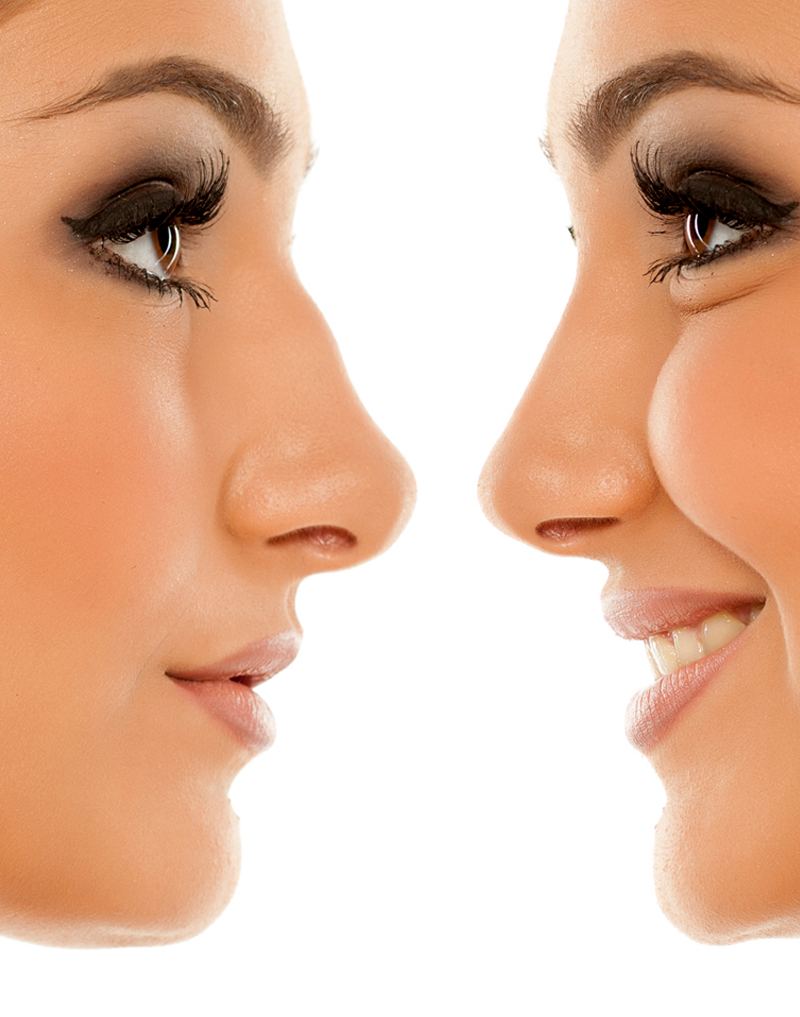Since the nose is located in the middle of the human face, it is a special organ that significantly determines/influences the external appearance of the person. The nose consists of the outermost skin and soft tissues as well as bones, cartilage and ligamentous supporting tissues.
A systematic and comprehensive nasofacial analysis is performed to determine the surgical plan. The nose is evaluated with the overall appearance and with the facial structure. The type, thickness and structure of the nasal skin play an essential/decisive role in this assessment.
Rhinoplasty can be performed on patients who have reached physical and mental maturity and whose nasal structure and tissues have completed their development. Rhinoplasty can be performed for aesthetic purposes as well as for functional ones, such as correcting breathing problems by opening up the curvatures of the nose.
In interpersonal communication, the nose plays an eminent role, it enables individuals to express themselves non-verbally and positively influence the perception of other people, especially through micro and macro expressions. The harmony of these facial expressions with each other is of great importance. A good examination of the existing anatomy before the operation and an adequate analysis of the nose and face are the main factors for a successful result.
In modern rhinoplasty there are two different approaches, the open and the closed procedure. Both approaches have their advantages and disadvantages. We often prefer open rhinoplasty because it provides a better overview of the causes of nasal roof and airway obstruction and of cosmetic deformities. In particular, this technique is preferred in secondary cases of complex nasal tip deformities where internal and external deformity forces need to be further reduced. Rhinoplasty can be performed under general anaesthesia or intravenous sedation and local anaesthesia.
With the help of rhinoplasty, patients can realise their dream appearance and thus their self-confidence can be strengthened. Complications or undesirable results that may occur at the end of the operation are rare and usually insignificant. However, complications such as nosebleeds, infections or reactions to the anaesthesia are possible.
After a successfully completed operation, a plaster splint is placed on the nose and the silicone pads are placed in both airways of the nose to fix the septum. For the first three weeks after surgery, patients are advised not to do anything to their nose, such as wiping or blowing their nose. The nose splint is kept dry in the early post-operative period. When washing the hair, it is important to remember to have it washed with an aid such as at the hairdresser's with the head bent back over the sink.
On the day of surgery, oral intake is started with a liquid diet and switched to a soft solid diet the following day. Eating foods that require excessive mouth movement is avoided for the first two weeks.
Stitches on the nose bridge and nose splint can be removed within the first week. There may be some discomfort in the post-operative period, such as a swollen or twisted nose and also numbness at the tip of the nose, so it should be explained to the patient that this will disappear in a few months. It is recommended that the patient limits sports activities during the first month.
As a respiratory functional organ, deviations of the nasal septum (septal deviations), pieces of flesh in the nose (polyps and conchal hypertrophies) that cause obstruction due to the nostrils not only cause shortness of breath when taking in air, but they can also cause many other health problems such as chronic headaches, sinusitis, sleep apnoea. For this reason, functionality and aesthetics should be considered together in aesthetic nose surgery.
